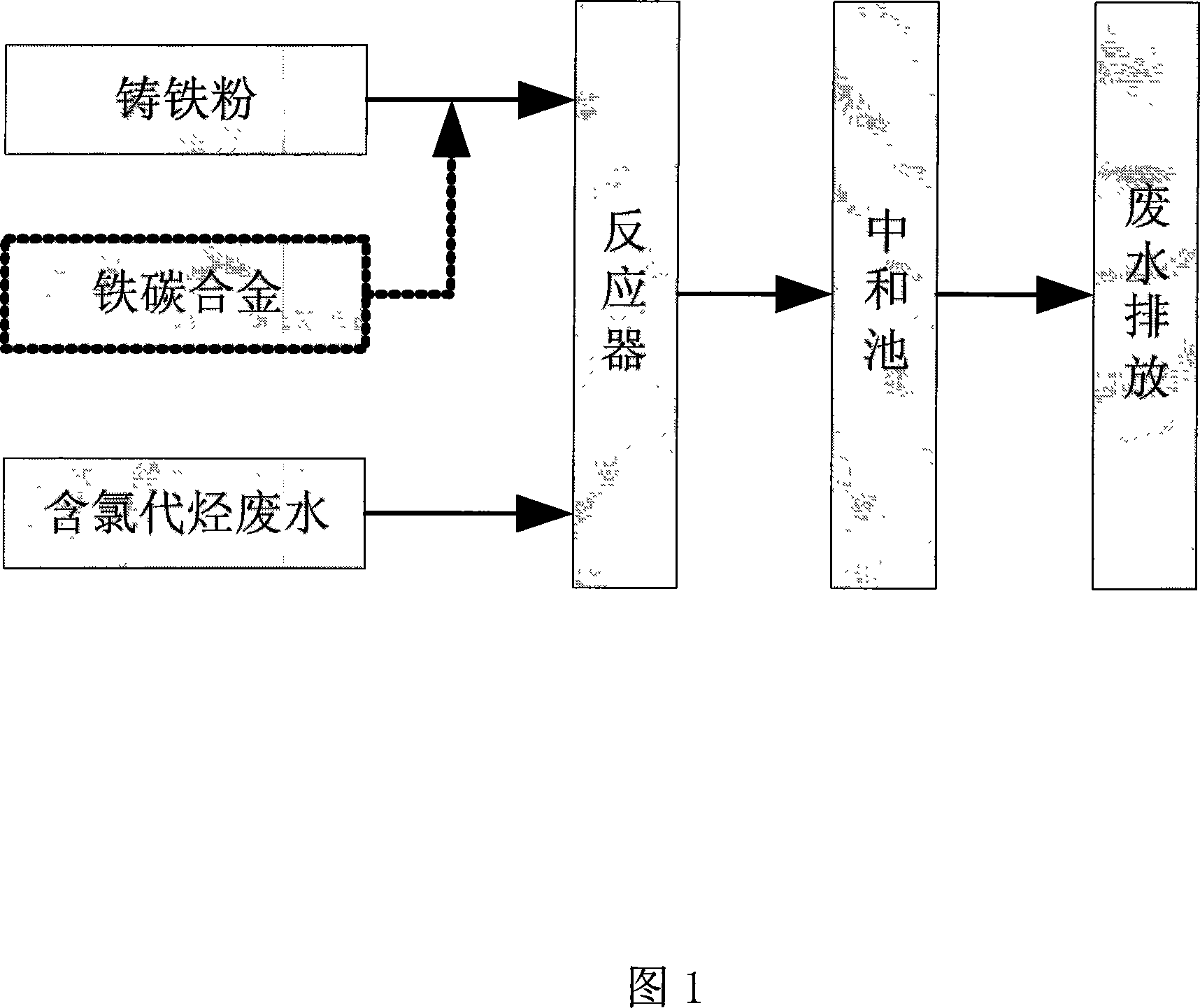Antichloration of hydrocarbon chloride in waste water
A chlorinated hydrocarbon and dechlorination technology, which is applied in chemical instruments and methods, water pollutants, neutralized water/sewage treatment, etc., can solve the problems of secondary pollution and high cost of sewage treatment, and achieve the effect of high-efficiency dechlorination
- Summary
- Abstract
- Description
- Claims
- Application Information
AI Technical Summary
Problems solved by technology
Method used
Image
Examples
Embodiment 1
[0021] Dechlorination agent: cast iron powder, particle size 100 mesh, dosage is 2-3kg per ton of water;
[0022] Dechlorination reaction operating conditions: normal temperature and pressure, pH 2.8, stirring, reaction residence time 4 hours;
[0023] Neutralizing flocculant: NaOH;
[0024] Neutralization and dechlorination operating conditions: normal temperature and pressure, PH 8.6;
[0025] Influent concentration: dichloromethane 20mg / L, chloroform 30mg / L, carbon tetrachloride 30mg / L
[0026] Treatment effluent concentration: dichloromethane 1.4mg / L, chloroform 1.9mg / L, carbon tetrachloride 0.9mg / L
Embodiment 2
[0028] Dechlorination agent: cast iron powder, particle size 80 mesh, dosage is 2-3kg per ton of water;
[0029] Dechlorination reaction operating conditions: normal temperature and pressure, pH 3.2, stirring, reaction residence time 3.5 hours;
[0030] Neutralizing flocculant: carbide slag;
[0031] Neutralization and dechlorination operating conditions: normal temperature and pressure, PH 7.8;
[0032] Influent concentration: dichloromethane 20mg / L, chloroform 30mg / L, carbon tetrachloride 30mg / L
[0033] Treatment effluent concentration: dichloromethane 1.6mg / L, chloroform 1.8mg / L, carbon tetrachloride 1.2mg / L
Embodiment 3
[0035] Dechlorination agent: cast iron powder, particle size 40-60 mesh, dosage 2-3kg per ton of water;
[0036] Dechlorination reaction operating conditions: normal temperature and pressure, pH 1.9, stirring, reaction residence time 4 hours;
[0037] Neutralizing flocculant: carbide slag;
[0038] Neutralization and dechlorination operating conditions: normal temperature and pressure, PH 8.2;
[0039] Influent concentration: tetrachlorethylene 50mg / L
[0040] Treatment effluent concentration: tetrachlorethylene 2.2mg / L
PUM
 Login to View More
Login to View More Abstract
Description
Claims
Application Information
 Login to View More
Login to View More - R&D
- Intellectual Property
- Life Sciences
- Materials
- Tech Scout
- Unparalleled Data Quality
- Higher Quality Content
- 60% Fewer Hallucinations
Browse by: Latest US Patents, China's latest patents, Technical Efficacy Thesaurus, Application Domain, Technology Topic, Popular Technical Reports.
© 2025 PatSnap. All rights reserved.Legal|Privacy policy|Modern Slavery Act Transparency Statement|Sitemap|About US| Contact US: help@patsnap.com

